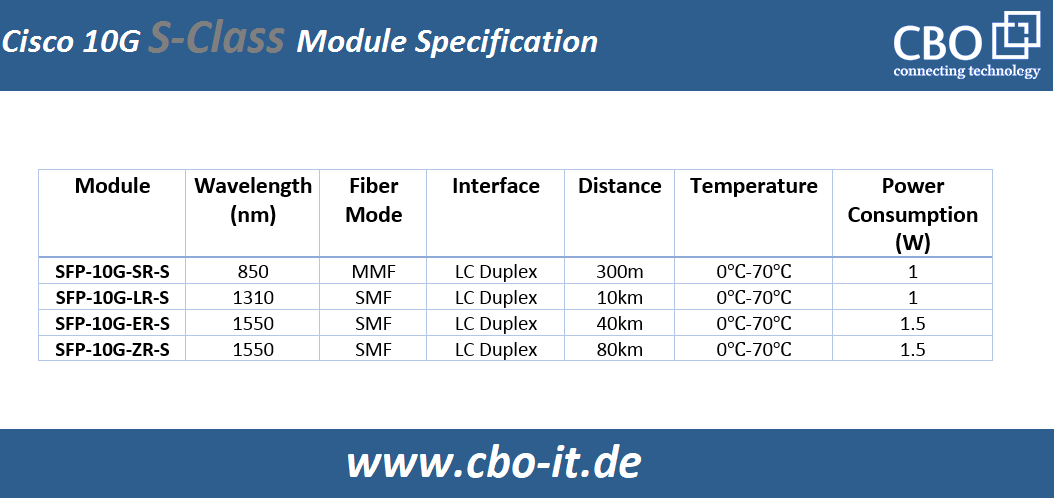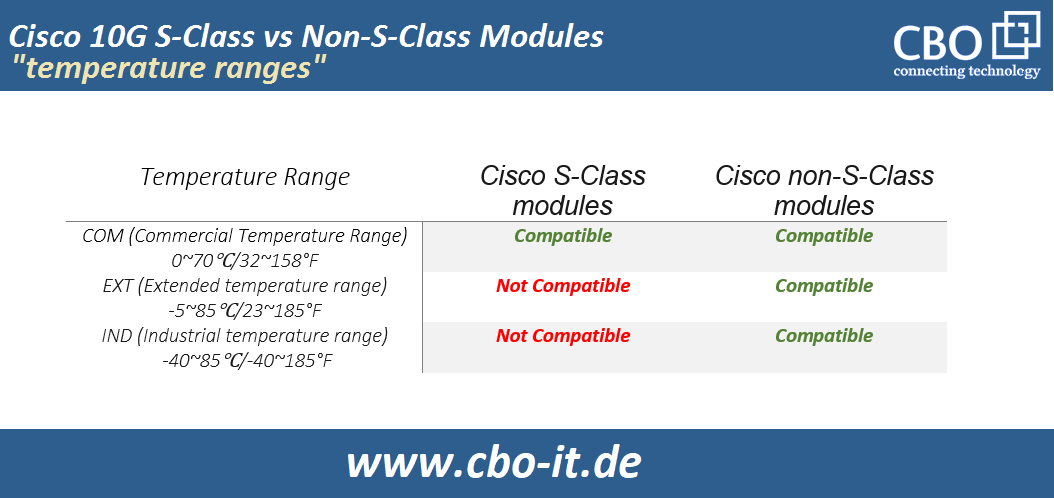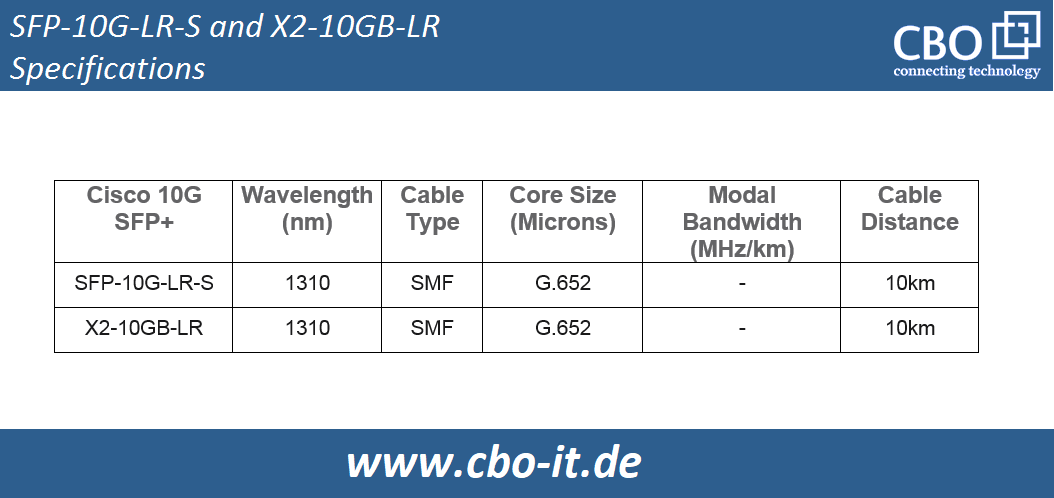A broad range of 10G SFP+ modules from Cisco has earned tremendous popularity and reputation over the past few years. In 10G Ethernet deployments and diverse networking environments, 10G modules from Cisco are quite popular. Back in 2014, the technology giant came ahead with a new range of S-Class modules such as SFP-10G-SR-S. this new series of optical modules brings more options for data centers and enterprises.
However, some people are still not aware of the differences between the Non-S Class and S-Class optics because Cisco`s official documentation contains no significant information about the differences between the above-mentioned two classes of optical hardware. In this article, we are going to share some useful information in this regard.
Cisco S-Class Vs. Non-S-Class Modules – Overview
Today, we have four types of 10G S-Class Cisco modules available on the market including;
- SFP-10G-SR-S
- SFP-10G-LR-S
- SFP-10G-ER-S
- SFP-10G-ZR-S
Please note that each of the above-mentioned modules is named with an “S”. The “S” here shows that these modules are offered without some “unnecessary features”. These optics are designed for data centers, enterprises, and other operating environments where there are no special temperature requirements to be considered. On the other hand, Non-S-Class Cisco optics are offered in a wider range than S-Class optics. Following is a list of most popular Non-Class Cisco modules;
- SFP-10G-SR
- SFP-10G-LR
- SFP-10G-ER
- SFP-10G-ZR
As we can see, the above-mentioned modules are named without an “S”. both the S-Class and Non-S-Class optical modules are identical in terms of specifications. Technically speaking, there are no differences between the S-Class and the Non-S-Class Cisco modules. The following chart contains detailed specifications of the S-Class modules from Cisco.

How to Choose Between Non-S-Class and S-Class 10G Cisco Modules?
In terms of size, interface, power consumption, wavelength, appearance both the S-Class and Non-S-Class modules have no differences whatsoever. As we have mentioned above, the S-Class modules are designed and offered without some “unnecessary features”. Now, let us talk about those “unnecessary features”.
Protocol
10G S-Class modules from Cisco (such as SFP-10G-SR-S) don’t support FCoE as they are designed to support Ethernet protocol only. the FCoE is a storage protocol that facilitates the direct operation of fiber channel communications over Ethernet. On the other hand, non-S-Class 10G modules from Cisco (such as SFP-10G-SR) support OTN, Ethernet, and WAN-PHY protocols. Besides, non-S-Class transceivers are TAA compliant whereas the S-Class 10G optical transceivers aren’t Trade Agreements Act (TAA) compliant.
Temperatur
10G S-Class modules from cisco are designed to operate over a commercial temperature range i.e. 32°F ~158°F. thus, the S-Class modules cannot be deployed beyond the above-mentioned temperature range. However, non-S-Class modules can be deployed and operated over industrial, extended, and commercial temperature ranges. SFP-10G-BXU-I is a good example to be mentioned here. This module can be deployed and operated in -40~85℃. Thus, it is suitable for harsh and outdoor environments such as mines and industries.
Transmission Distance
According to the information provided by Cisco, S-Class 10G modules are preferred for short transmission distance applications such as across adjacent racks and within racks in network data centers. So, the S-Class modules can do the job when extraordinary long transmission distances are not required. However, you must consider non-S-Class Cisco 10G modules if you are seeking connectivity between far located buildings or across a campus.
Applications
S-Class 10G modules from Cisco are specifically designed for data center and enterprise-level 40G and 10G networking applications and are available for the most common reaches often required in such environments. Whereas, non-S-Class 10G modules from Cisco are ideal for non-temperature controlled industrial and harsh environments. The non-S-Class optics has a wider scope than S-Class optics as these modules are found commonly in small business and homes.
Cost Factor
By now, we already know that the S-Class modules are offered without some “unnecessary features” or “additional features”. Understandably, S-Class modules are cheaper than their non-S-Class counterparts. The lower prices of S-Class modules make them an attractive option for many users who prefer to stick with Cisco optics. Thus, the 10G S-Class modules are an affordable alternative to 10G non-S-Class Cisco modules in data centers and enterprises.

Non-S-Class Vs. S-Class Modules - Compatibility
Some people may wonder are non-S-Class Cisco modules are compatible with the S-Class modules? Well, in the light of available information, it can safely be concluded that S-Class and non-S-Class Cisco modules are fully compatible. For further clarification, let us consider X2-10GB-LR (non-S-Class) and SFP-10G-LR-S (S-Class) modules and compare the specifications;
From the above exhibit, it is clear that both modules share the same wavelength, transmission distance, and data rate. Thus, these two types of transceivers can be interconnected even though one is from the S-Class range and the other one is from the Non-S-Class range.

Conclusion
- S-Class optics are cheaper as these products are offered without some “unnecessary features”
- You can go with the S-Class modules for rack-to-rack or short distance networking
- Non-S-Class 10G modules from Cisco support longer distances and extended temperature ranges
- Consider 3rd part Cisco compatible 10G modules in case if you are looking for a cheaper alternative
 English
English
 Deutsch
Deutsch
 Espaniol
Espaniol










